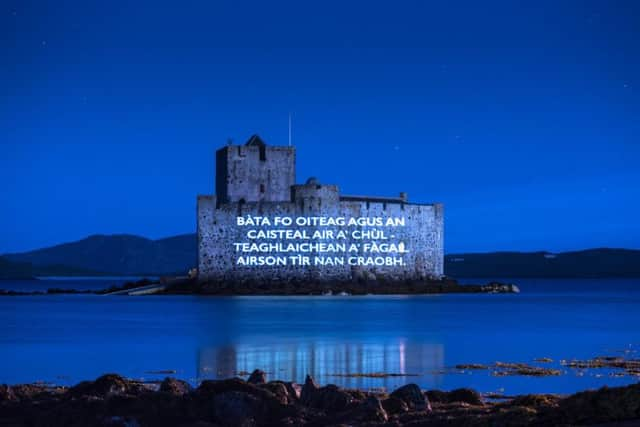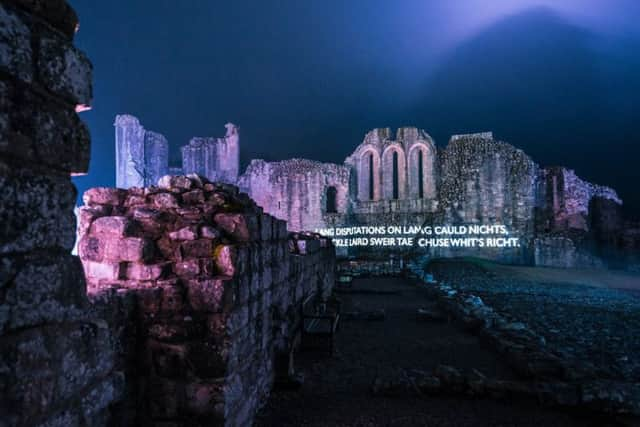Castles light up in celebration of Gaelic and Scots
Poet Daibhidh Eyre was commissioned to write a piece in Gaelic and Scots by Historic Environment Scotland with lines from the verses illuminated on eight historic properties across the country.
“Òran nan Clachan” - “Song of the Stones” - marks how language has defined history and culture through time.


Advertisement
Hide AdMr Eyre looked at Dunstaffnage Castle, near Oban, the 13th Century fortress where Jacobite heroine Flora MacDonald was held for a period, for inspiration for Song of the Stones.
Kildrummy Castle in Aberdeenshire, where the Earl of Mar spent many nights deciding whether to join the Jacobites or Government sides during the early 18th Century uprising, was also an influence on the poet.
Other sites of interest were Ruthven Barracks in Badenoch, which was built to subdue the Highlands in the years after 1715 and Urquhart Castle by Loch Ness. It was captured and held by Robert the Bruce during his march through The Great Glen.


Crossraguel Abbey, near Maybole in South Ayrshire, which was long inhabited by Benedictines, also informed the poems as did Kisimul Castle on Barra. It was from the bay where the castle stands that many emigrants left the islands for Canada
Elgin Cathedral, which was destroyed during the time of the Reformation, and Broughty Castle near Dundee, where General Monck, commander-in-chief of the Commonwealth Army in Scotland, grew tired of war after seeing the behaviour of his soldiers when they took Dundee.
The poem was written to launch the Gaelic Language Plan by Historic Environment Scotland.
The plan will encourage staff to learn the language where possible and further highlight the influence of Gaelic on the history of its sites and objects in its care.
